Methane, a greenhouse gas 30 times more potent than carbon, is spewing from what was believed to be an impermeable barrier in Siberia in amounts equal to methane releases from the world’s oceans. The discovery has lead researchers to fear the possibility of abrupt climate warming. According to the study published in Science, subsea permafrost below the East Siberian Arctic Shelf has become compromised, leaking vast amounts of methane into the atmosphere.
The researchers have estimated that 6.5 to 10 teragrams of methane is emitted from the East Siberian Arctic Shelf every year: one teragram equals about 1.1 million tons. However, researchers are particularly worried about the amount of methane that could be released in the future.
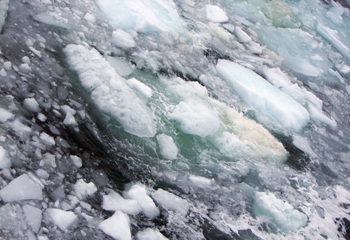 The sea surface above the East Siberian Arctic Shelf is full of ice and bubbles. Sonar is the only way to detect the vast clouds of methane bubbles rising from the sea floor. Photo courtesy of Igor Semiletov, University of Alaska Fairbanks. |
“Our concern is that the subsea permafrost has been showing signs of destabilization already,” explains lead author Natalia Shakhova, a researcher at the University of Alaska Fairbank’s International Arctic Research Center. “If it further destabilizes, the methane emissions may not be teragrams, it would be significantly larger.”
Since the methane is stored below the sea, the release of the potent greenhouse gas has the capacity of being far larger and quicker than methane released by thawing permafrost on land. In a podcast Shakhova compared the methane built up beneath the East Siberian Arctic Shelf permafrost to a bottle of champagne: in other words if an opening occurs in the permafrost vast stores of methane could be abruptly released into the atmosphere much like a cork being popped.
The East Siberian Arctic Shelf is 50 meters in depth or less: due to its shallowness in the shelf has been both submerged under the seawater and exposed depending on climate conditions during Earth’s past. During cold periods, the shelf would remain frozen and not leak methane. However, as global temperatures warm and sea levels rise, the shallow shelf is flooded with seawater, which is 12-15 degrees warmer than the air temperature, leading to compromise of the permafrost and possible methane-release.
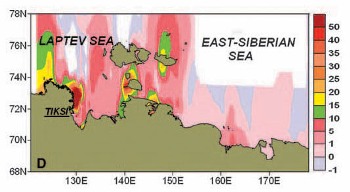 Fluxes of methane venting into the atmosphere over the East Siberian Arctic Shelf. Image courtesy of Science/AAAS. |
“It was thought that seawater kept the East Siberian Arctic Shelf permafrost frozen,” Shakhova said. “Nobody considered this huge area.”
Shakhova points out that in Earth’s geological record atmospheric methane concentrations have been between 0.3 to 0.4 parts per million in cold periods to 0.6 to 0.7 parts per million in warm periods. Yet, today, current average methane concentrations globally are 1.7 parts per million, more than double the average in warm periods. In the Arctic that average jumps to 1.85 parts per million: the highest concentration in 400,000 years. Yet, methane measurements above the East Siberian Arctic shelf are 10 percent higher. According to measurements 50 percent of the surface water in the area is supersaturated with methane and 80 percent of the deep water.
If the methane were being released in deep water, it would oxidize before reaching the surface and become carbon dioxide. However, since the East Siberian Arctic shelf is so shallow, this oxidization doesn’t occur and the gas enters the atmosphere as the far more potent methane.
“The release to the atmosphere of only one percent of the methane assumed to be stored in shallow hydrate deposits might alter the current atmospheric burden of methane up to 3 to 4 times,” Shakhova concludes, adding that “the climatic consequences of this are hard to predict.”
Related articles
NASA: Arctic melt season lengthening
(02/03/2010) Newly released images from NASA and the National Snow and Ice Data Center show that the Arctic’s melt season has lengthened significantly over the past few decades.
NASA: 2009 second warmest year on record
(01/24/2010) According to NASA’s Goddard Institute for Space Studies (GISS), last year was tied for the second warmest year on record after 2005, the warmest year on record. If just looking at the southern hemisphere, however, 2009 proved the warmest yet recorded since record-taking began in 1880. Overall 2009 tied a total of five other years—four from the 2000s—for the second warmest on record. But, researchers say what is most important was that the past decade, from January 1st 2000 to December 31st 2009, proved the warmest on record.
Catastrophic sea level rise could occur with only two degrees Celsius warming
(12/17/2009) Allowing the climate to rise by just two degrees Celsius—the target most industrialized nations are currently discussing in Copenhagen—may still lead to a catastrophic sea level rise of six to nine meters, according to a new study in Nature. While this rise in sea levels would take hundreds of years to fully occur, inaction this century could lock the world into this fate.
Climate change causing irreversible acidification in world’s oceans
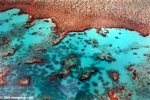
(12/15/2009) A new study from the Secretariat of the Convention on Biological Diversity has synthesized over 300 reports on ocean acidification caused by climate change. The report finds that increasing ocean acidification in the oceans will lead to irreversible damage in the world’s oceans, creating a less biodiverse marine environment. Released today the report determines that the threat to marine life by ocean acidification must be considered by policymakers at the UN Climate Change Conference in Copenhagen.
Sea levels set to rise more than expected due to ‘deeply surprising’ Greenland melt
(12/14/2009) A new study by the Arctic Monitoring and Assessment Program estimates that the sea will rise by 0.5 to 1.5 meters by 2100, threatening coastal cities and flooding island nations. This is double the predicted rise estimated by the UN’s Intergovernmental Panel on climate Change (IPCC) in 2007, which did not incorporate sea level rise due to the melting of Greenland and Antarctica’s ice sheets.
Arctic lake undergoing unprecedented changes due to warming
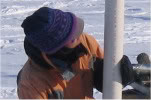
(10/19/2009) The Arctic should be growing cooler, but a new sediment core taken from an Arctic lake reveals that the lake’s ecology and chemistry has been transformed by unnatural warming beginning in the 1950s. The sediment core proves that changes happening in the lake during the Twentieth Century are unprecedented over the past 200,000 years. Headed by University of Colorado scientist Yarrow Axelford, the study retrieved the sediment core from the bottom of a thirty foot deep lake on Baffin Island. Importantly the sediment core goes back 80,000 years further than any other core retrieved from the Greenland ice sheet, providing researchers with the longest timescale yet of changes in the Arctic climate.
Satellite lasers show melting of Greenland, Antarctic worse than expected
(09/23/2009) Resaerchers examining 43 million satellite measurements of Antarctica’s thinning ice sheets and 7 million of Greenland’s, show that the ice is melting faster than expected. Published in Nature the research is the most comprehensive picture to date of the melting glaciers, allowing scientists to better predict how sea levels may rise.
Sea levels set to rise as Arctic warming replaces millennia long natural cooling cycle
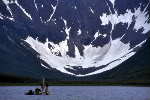
(09/03/2009) According to a new study published in Science the Arctic should be cooling, and in fact has been cooling for millennia. But beginning in 1900 Arctic summer temperatures began rising until the mid-1990s when the cooling trend was completely overcome. Researchers fear that this sudden up-tick in temperatures could lead to rising sea levels threatening coastal cities and islands. “Scientists have known for a while that the current period of warming was preceded by a long-term cooling trend,” said lead author Darrell Kaufman of Northern Arizona University. “But our reconstruction quantifies the cooling with greater certainty than ever before.”







